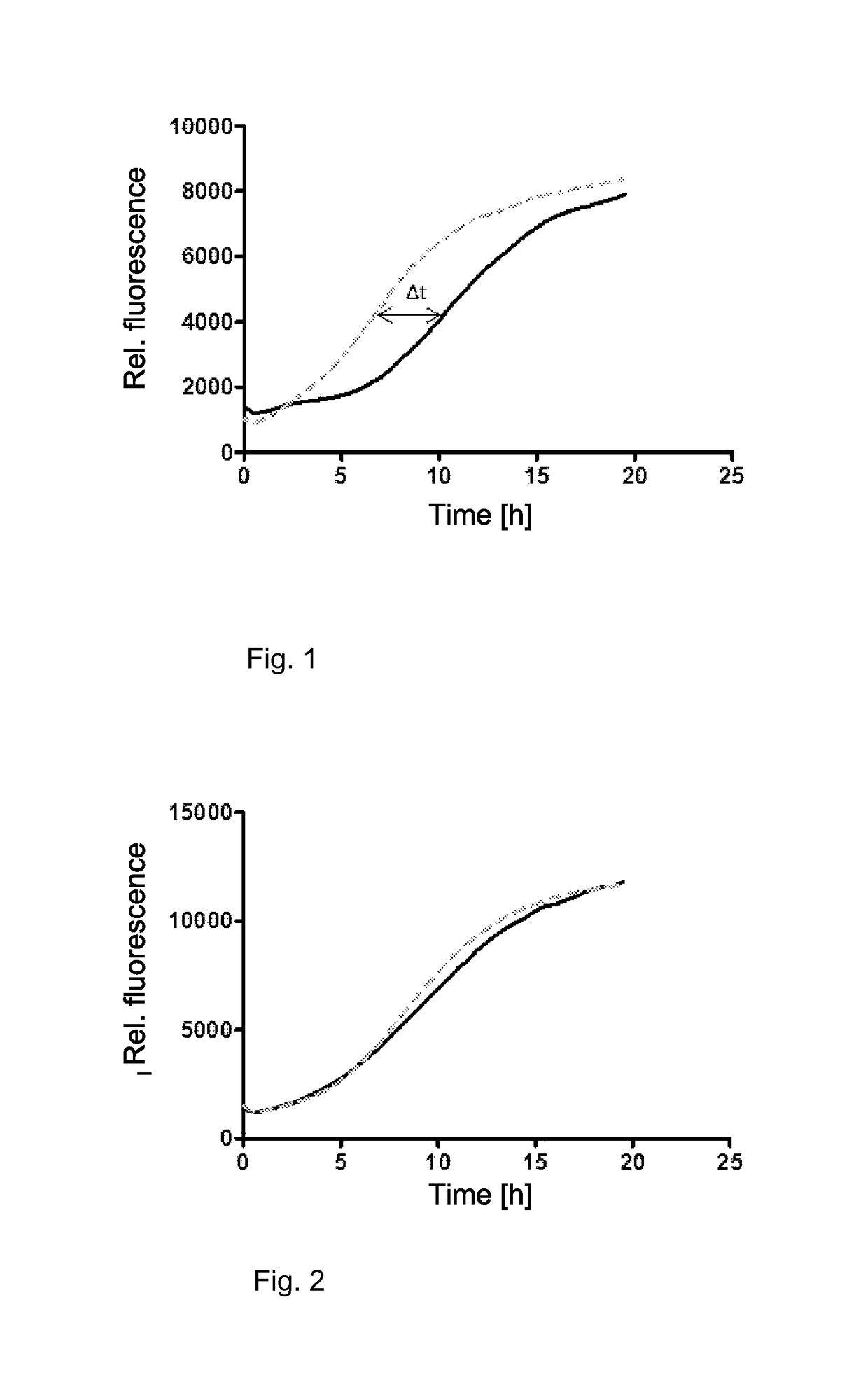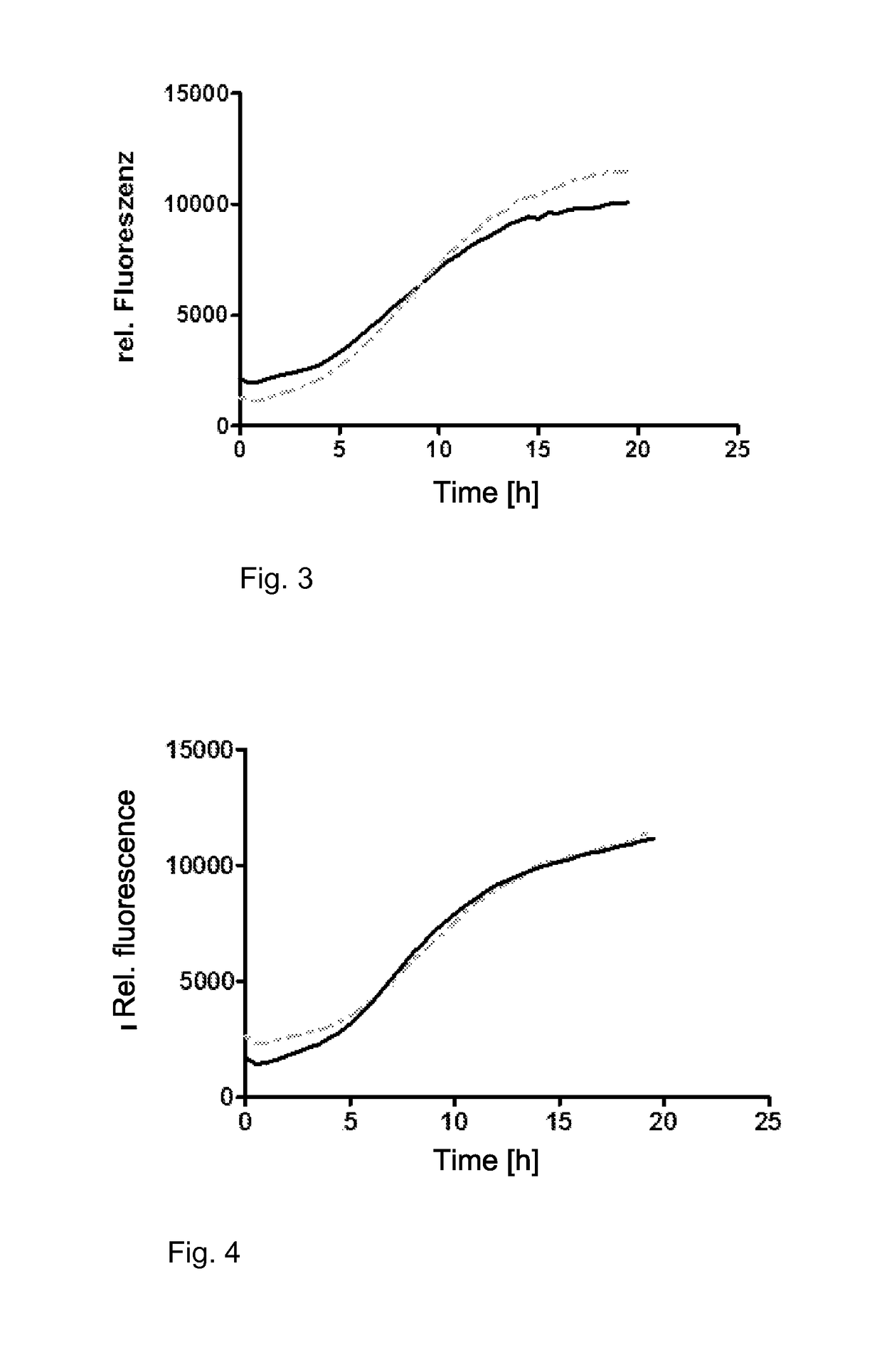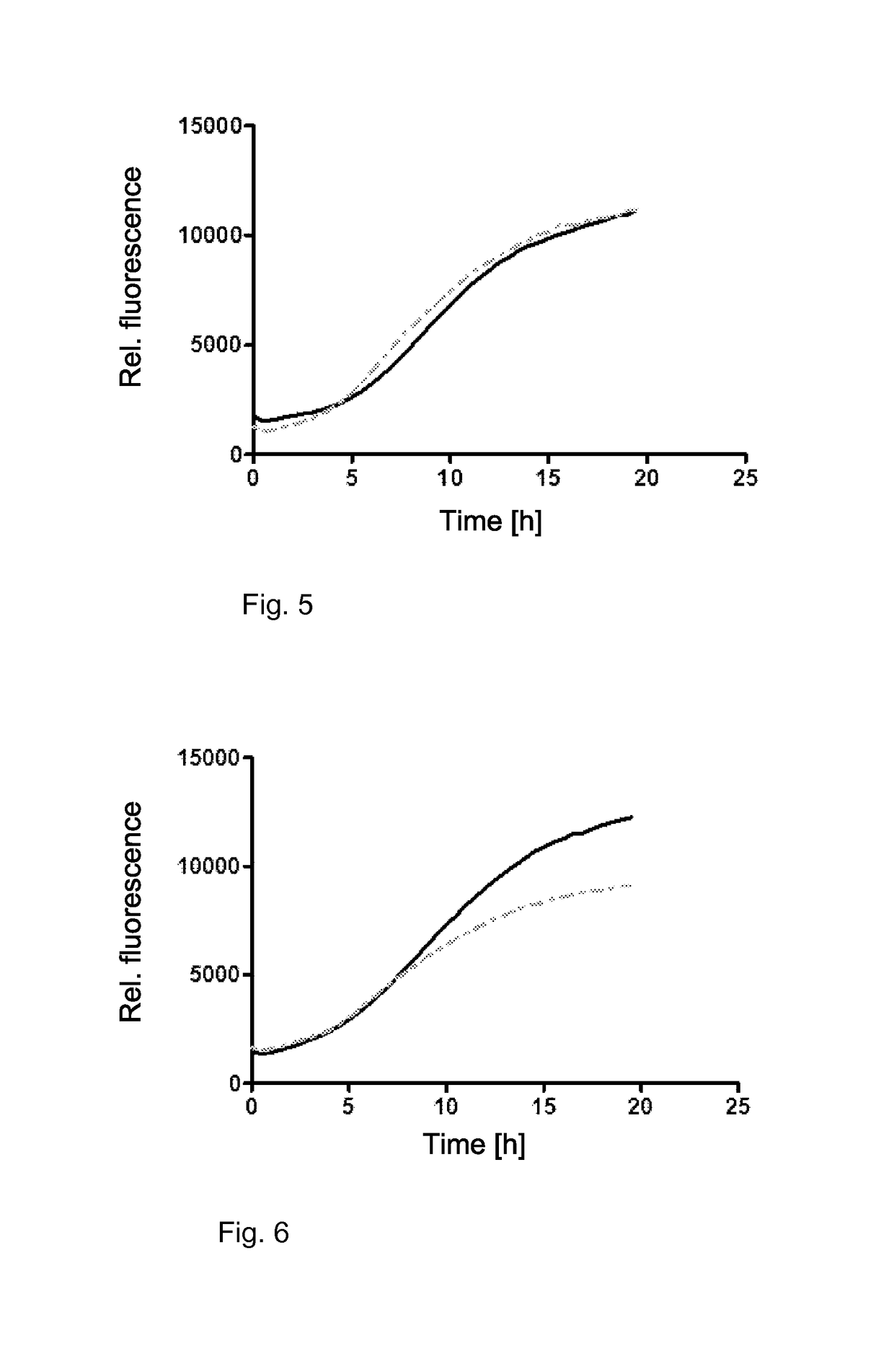Method for treating blood, blood products and organs
- Summary
- Abstract
- Description
- Claims
- Application Information
AI Technical Summary
Benefits of technology
Problems solved by technology
Method used
Image
Examples
examples
1. ThT Seeding Assay: Principles
[0166]Amyloidogenic peptides have the ability to form amyloid fibrils. This can occur spontaneously with a certain probability. If no amyloid “germs” are present, it may take some time until the first amyloid fibrils are formed, the formation and replication of which can be quantitatively monitored with the help of the fluorescence from Thioflavin T (ThT). ThT interacts with A-beta fibrils and the fibril-dye complex exhibits increased fluorescence (λem: 450 nm, λex: 490 nm). The time until the ThT signal begins to increase is called the “lag phase”. This “lag phase” can be avoided or greatly shortened if amyloid “germs”, also called “seeds”, are added to the aggregation batch. A known example is the addition of prion-containing brain material to a solution of monomeric recombinant prion protein, which then forms ThT-positive fibrils with a significantly shortened “lag phase”. A further example consists in the addition of a small amount of Abeta-amyloi...
PUM
| Property | Measurement | Unit |
|---|---|---|
| Biocompatibility | aaaaa | aaaaa |
Abstract
Description
Claims
Application Information
 Login to View More
Login to View More - R&D
- Intellectual Property
- Life Sciences
- Materials
- Tech Scout
- Unparalleled Data Quality
- Higher Quality Content
- 60% Fewer Hallucinations
Browse by: Latest US Patents, China's latest patents, Technical Efficacy Thesaurus, Application Domain, Technology Topic, Popular Technical Reports.
© 2025 PatSnap. All rights reserved.Legal|Privacy policy|Modern Slavery Act Transparency Statement|Sitemap|About US| Contact US: help@patsnap.com



